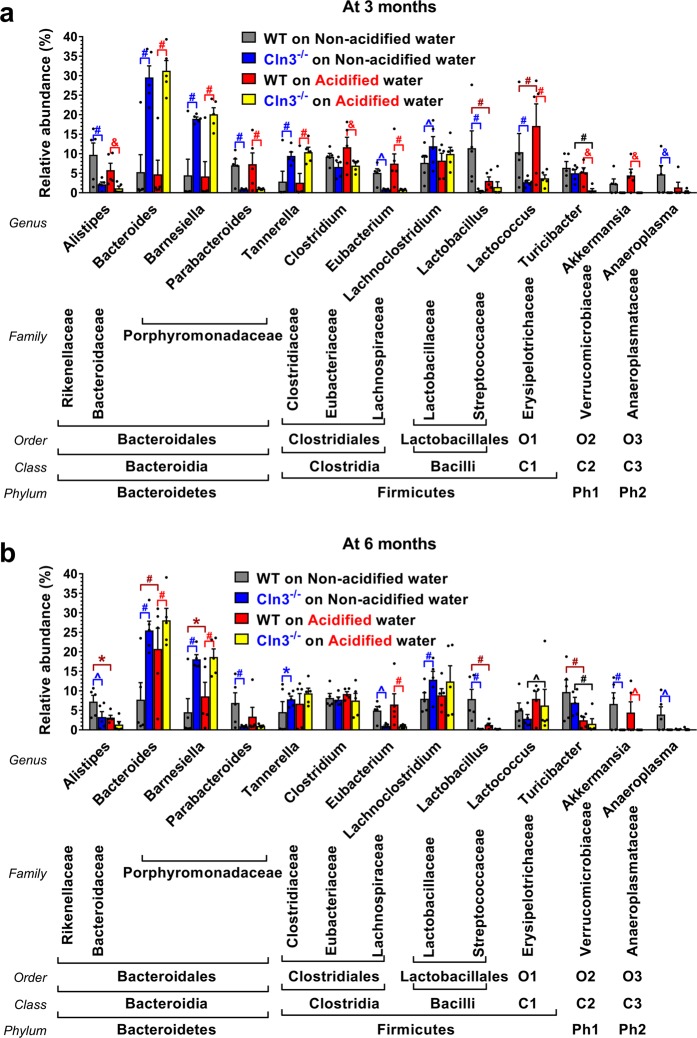Figure 8.
Genus level analysis of the gut microbiota in Cln3−/− and wild type mice kept on non-acidified water or receiving acidified water from postnatal day 21. Cln3−/− and wild type (WT) male mice either were kept on non-acidified water or received acidified water from postnatal day 21 (weaning). Fecal pellets were collected at three and six months of age to analyze the gut microbiota by 16S rRNA gene sequencing. (a,b) The gut microbiota of Cln3−/− and wild type mice at the genus taxonomic level are markedly different at both three (a) and six months (b) of age, and acidified water differentially changes the genus composition in Cln3−/− and wild type mice. Columns and bars represent mean ± SEM and the symbols show the individual data (n = 5 mice). Statistical significance was determined by 2-way ANOVA with Bonferroni’s post-test for multiple comparisons (#p < 0.0001, &p < 0.001, ^p < 0.01, *p < 0.05; blue lines and symbols: WT vs. Cln3−/− on Non-acidified; red lines and symbols: WT vs. Cln3−/− on Acidified; dark red lines and symbols: WT on Non-acidified vs. WT on Acidified; black lines and symbols: Cln3−/− on Non-acidified vs. Cln3−/− on Acidified). Ph1, ; Ph2, Tenericutes; C1, Erysipelotrichia; C2, Verrucomicrobiae; C3, Mollicutes; O1, Erysipelotrichales; O2, Verrucomicrobiales; O3, Anaeroplasmatales.

